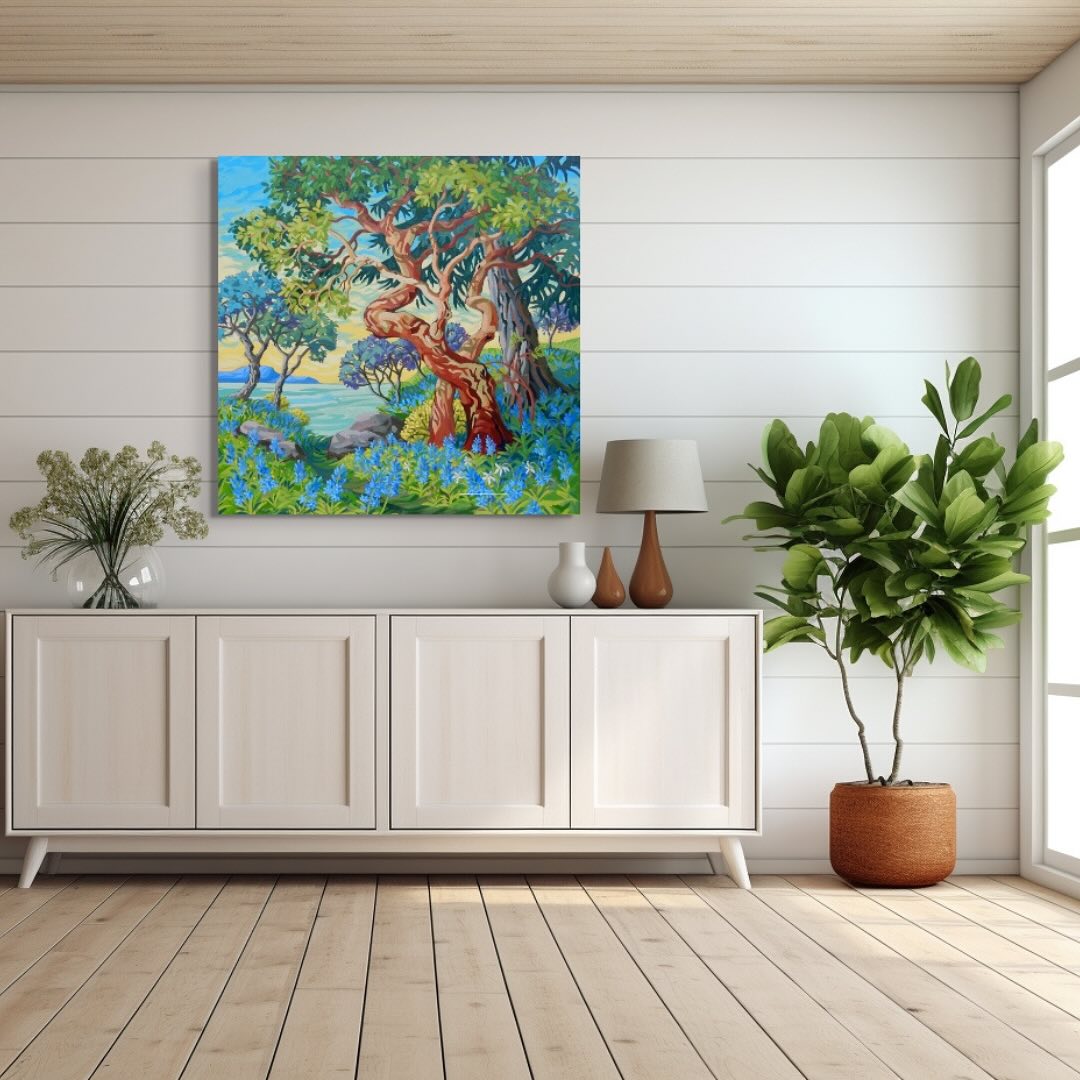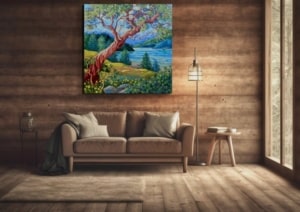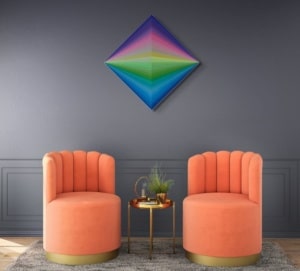Art has the power to transform any room. It can create a mood, enhance a theme, or even spark conversation. Choosing the right original painting for your space is a thoughtful and exciting process that not only personalizes your environment but also reflects your style and preferences. At Ian Tan Art Gallery, we believe that art should be as unique as the space it inhabits. Whether you’re decorating your home or office, an original painting from our curated collection can elevate the aesthetic value of your space in ways that prints and reproductions simply cannot. In this guide, we will walk you through how to select the perfect original painting for your space, with tips on style, color, size, and more.
Why Choosing the Right Original Painting is Essential
When it comes to decorating your home, every detail counts—especially when it comes to art. An original painting from Ian Tan Art Gallery can serve as the focal point of a room, providing depth, warmth, and character. It can also set the tone for the space and offer a sense of uniqueness that mass-produced art simply cannot match. Our carefully curated collection is designed to bring sophistication, originality, and beauty to your home, enhancing the atmosphere of any room. Whether you’re looking for something bold, subtle, modern, or classic, our gallery offers diverse pieces that cater to every style and preference.
Creating an Atmosphere with Art
The artwork you choose has a significant impact on the overall ambiance of the room. Whether you aim to create a tranquil retreat, a vibrant, energizing space, or a sophisticated environment, an original painting can help set the perfect mood.
How Art Transforms Interior Spaces
Original paintings have the ability to complement and elevate any interior design style. They add texture, color, and intrigue, while giving your room a personality that mirrors your own taste and lifestyle. The right painting can make a room feel inviting, cozy, luxurious, or even inspiring.
Step 1: Understanding Your Space
Before selecting an original painting, it’s essential to understand the space where it will be displayed. The size, functionality, and style of the room all play a crucial role in determining which artwork will work best.
Modern, Minimalist, Traditional, and Eclectic Spaces: Each design style has its own visual language. A minimalist room may benefit from a bold, abstract painting that stands out as a focal point, while a traditional space may feel more at home with a classic landscape or still life. Eclectic rooms, on the other hand, are perfect for showcasing a mix of styles.
Aligning Your Artwork with Furniture and Decor: The painting should complement the existing furniture and decor. Consider the texture and colors in your furnishings. A vibrant, colorful piece of art might be the perfect contrast to a neutral-toned sofa, while a more subdued painting could enhance the calmness of a serene, minimalistic bedroom.
Considering Room Functionality
The function of the room plays a role in the type of artwork you choose. A living room might benefit from larger, more eye-catching pieces, while a kitchen or bathroom may only need a small, subtle print. In offices, art can be motivational or soothing, contributing to a productive atmosphere.
Different Artwork Choices for Living Rooms, Bedrooms, Kitchens, and Offices: Each space serves a unique purpose, and selecting the right art can enhance its function. For example, in a living room, you might want something that is both impressive and inviting, while in a bedroom, soothing and calming art might be ideal.
How Art Can Set the Tone for Various Areas of Your Home: Art can communicate the intended atmosphere. A lively, colorful painting can infuse energy into a kitchen or dining area, while soft tones in a bedroom artwork promote relaxation and rest.
Step 2: Understanding Art Styles
Artwork comes in many different styles, each offering a unique aesthetic. Understanding these styles will help you decide which one resonates with your space.
- Abstract Art: Abstract art is often a bold choice, perfect for creating a statement in a modern or contemporary space. It can bring emotion and intrigue, often sparking conversation.
- Realism: Realistic paintings tend to evoke a sense of calm and familiarity, making them great for traditional or rustic spaces. They often depict landscapes, portraits, or scenes from everyday life.
- Impressionism: Known for its vibrant colors and dynamic brushstrokes, Impressionism can infuse a room with energy and light. It works well in both classic and modern spaces.
- Contemporary Art: If you want to make a bold statement, contemporary art offers fresh, cutting-edge styles that are perfect for modern homes and offices. It often reflects current trends and the artist’s unique vision.
How to Decide What Fits Your Space’s Vibe
Choosing the right art style depends on your room’s vibe. Do you prefer a calm, serene space or something more energetic and lively? Think about what you want your room to express. This will guide you to the right style. Vancouver is known for its stunning natural landscapes, and many local artists draw inspiration from the city’s mountains, forests, and oceans. Incorporating these elements into your artwork adds a sense of place and a personal connection to the surroundings.
Supporting local artists is not only a great way to invest in original art, but it also gives you a piece that reflects the cultural essence of your city. Vancouver-inspired artwork can bring a sense of connection to the local environment.
Step 3: Size and Placement
The size of the painting and its placement within the room are vital to achieving a balanced look. A piece that is too large or too small for a wall can look out of place.
Choosing the Right Size of Artwork for Your Wall
Scaling Paintings to Your Wall Space: Measure your wall space carefully. A general rule of thumb is to choose artwork that takes up about two-thirds to three-quarters of the wall space for a well-proportioned look.
Guidelines for Single Large Pieces vs. Multiple Smaller Pieces: Large paintings can make a dramatic statement, while a gallery wall of smaller pieces can offer variety and interest. Consider what works best with the room’s dimensions and the existing decor.
Where to Hang Your Painting
- Optimal Height and Positioning Tips: Hang the artwork at eye level, which is typically around 57–60 inches from the floor. If the painting is large, position it slightly higher for balance. Also, make sure the artwork isn’t too close to the ceiling or too low on the wall.
- Framing and Visual Balance: Consider the frame style and color. A large painting might look best with a simple frame to avoid overwhelming the space, while smaller pieces might benefit from a more detailed frame to add emphasis.
Step 4: Color Coordination: How to Match the Color Palette of Your Space
The colors of your painting should complement or contrast with your room’s color palette to create harmony or contrast.
Choose artwork that enhances the colors already present in your room. For example, if you have neutral-colored furniture, you can choose a vibrant piece of art that adds color and personality.
Color Psychology in Interior Design
Colors have psychological effects. Blue tones are calming, while reds and yellows are energizing. Choose artwork that evokes the mood you want to create in your space.
Using Contrast and Accent Colors
If you want the artwork to stand out, opt for contrasting colors that make the piece pop against your background. Accent colors that tie back to the room’s decor can also be used to create a cohesive look.
Creating a Focal Point with Art
An original painting can act as the focal point of the room. By using vibrant colors or dynamic patterns, you can draw attention to the painting and make it the centerpiece of the space.
Step 5: Composition and Aesthetic Harmony
Art composition is about finding balance and harmony between the piece and its surroundings.
- Symmetry vs. Asymmetry in Artwork:
Symmetry tends to create a sense of calm and order, while asymmetrical compositions can feel more dynamic and modern. Choose the composition based on the overall vibe of the room.
- The Role of Balance, Lines, and Patterns in Interior Design
Balance in composition creates a visually appealing layout. The use of lines and patterns can help integrate the artwork into the room’s existing design elements, creating cohesion and flow.
- The Relationship Between Art and Surroundings
Art should work harmoniously with the rest of your room. Consider the lines and shapes in your furniture, lighting, and decor when selecting a painting that will create balance.
Step 6: Investing in Original Art
An original painting is more than just a decoration—it’s an investment in culture, beauty, and craftsmanship. Original paintings offer a sense of exclusivity, with each piece being unique and irreplaceable. This exclusivity enhances the value and charm of your space.
- Supporting Local Artists in Vancouver
By purchasing an original piece from a local artist, you’re not only investing in your home but also supporting the vibrant arts community in Vancouver.
- How to Assess the Quality of Original Art
When buying an original painting, ensure it is authentic and well-crafted. Check for the artist’s signature, provenance, and certifications to guarantee its originality and value.
- Tips for Choosing High-Quality Artwork for Your Investment
Look for well-executed compositions, premium materials, and attention to detail. The quality of the painting is just as important as its visual appeal.
Step 7: Personalizing Your Art Selection
Your art should reflect who you are. It should tell a story, evoke memories, and bring joy every time you look at it.
- Making the Art Choose You
When choosing a painting, let your emotions guide you. Trust your instinct and pick a piece that speaks to you.
- How to Trust Your Instinct When Choosing Art
Take time to explore various pieces. The right one will connect with you on a deeper level, evoking a sense of joy or contemplation.
- Incorporating Personal Stories or Themes
Select art that reflects your experiences, values, or memories. Whether it’s a piece that reminds you of a special place or moment, or simply an artwork that resonates with your beliefs, your art can tell your story.
- How Art Can Reflect Your Personality and Life Experiences
Art is a window into your soul. Choosing artwork that speaks to your personality and experiences makes your space uniquely yours.
Conclusion
At Ian Tan Art Gallery, we understand that selecting the perfect original painting for your space is more than just about decoration—it’s about creating an environment that reflects your unique personality and style. By carefully considering the style, size, color, and placement of the artwork, you can effortlessly enhance the ambiance of any room. Whether you’re drawn to abstract, realism, or local Vancouver-themed pieces, we are here to guide you in finding artwork that speaks to you and elevates your space.
An original painting is not merely an addition to your decor; it’s an expression of your individual taste, experiences, and the story you want to tell through art. With our carefully curated selection of original pieces, we invite you to explore the beauty and transformation that an exceptional work of art can bring to your home or office.







